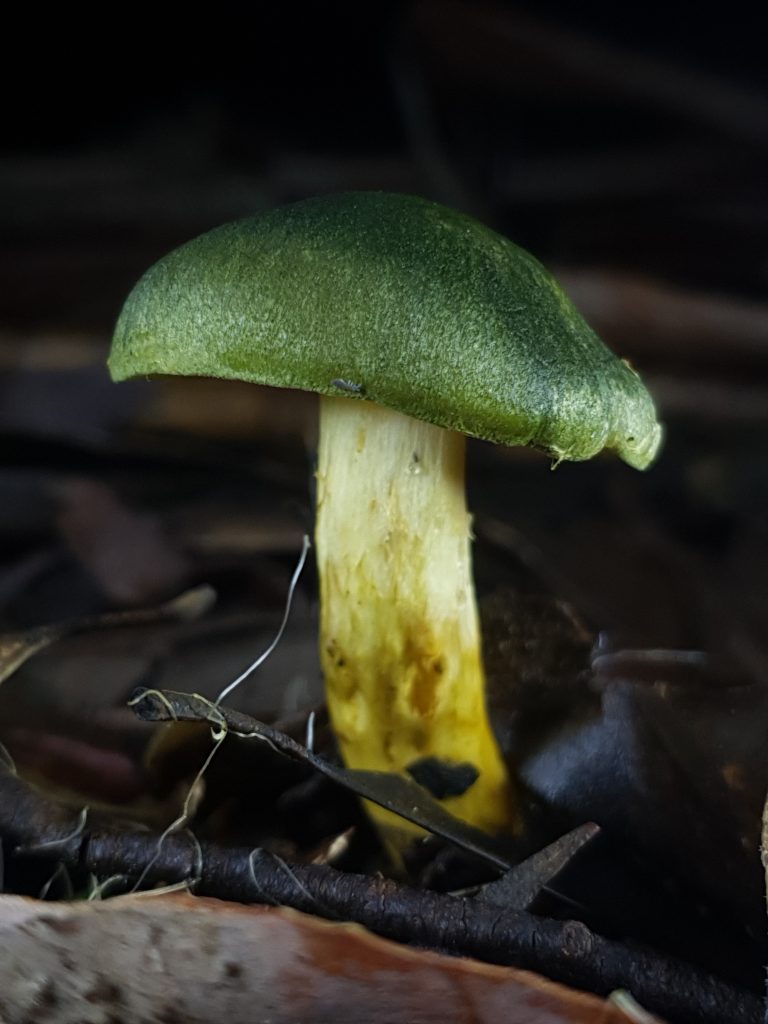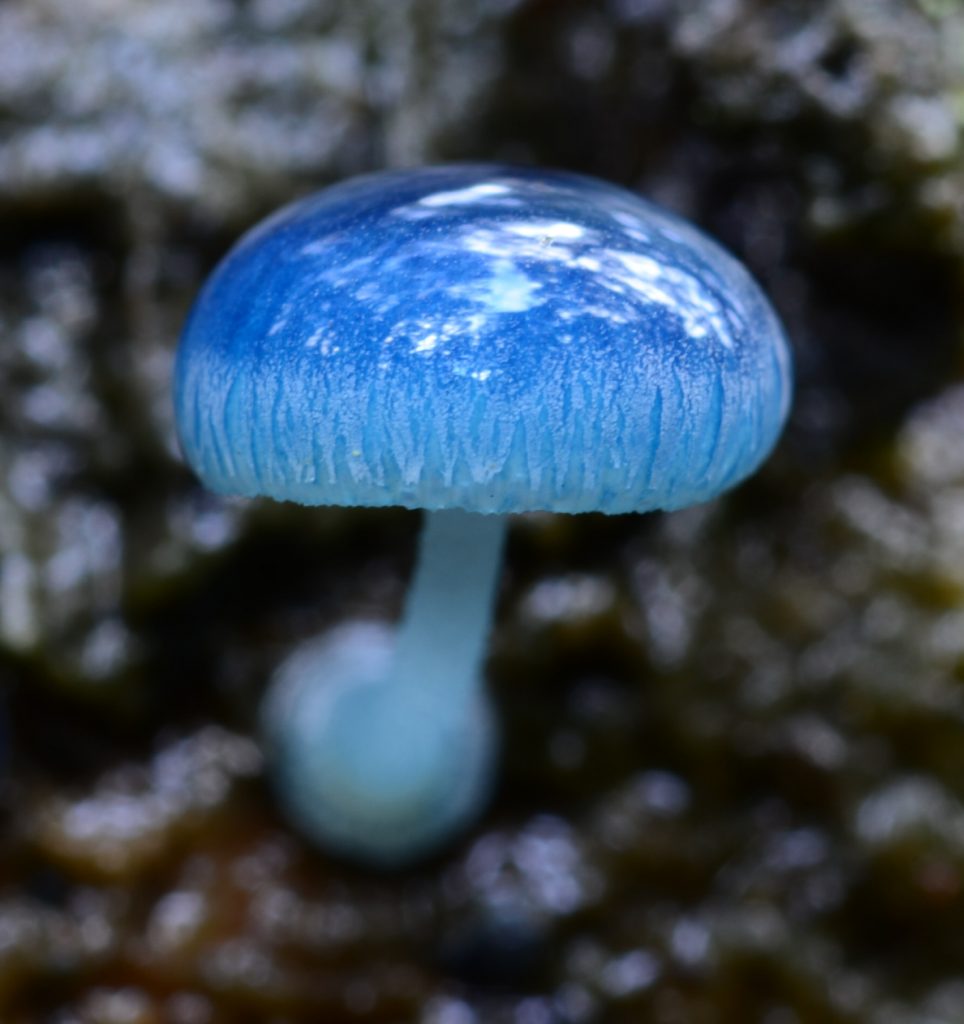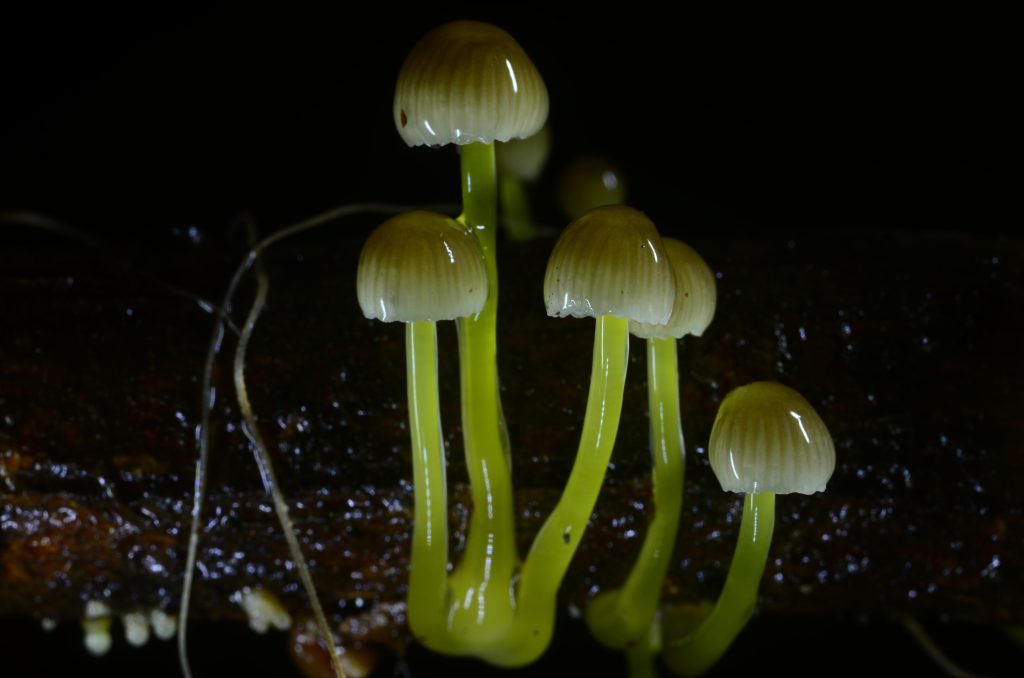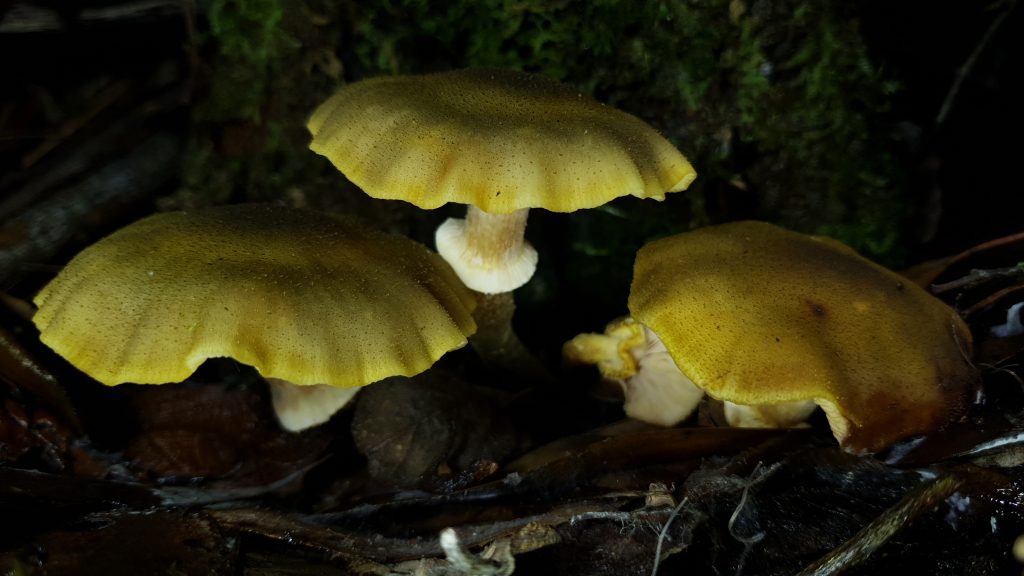1. Protostropharia semiglobata 2. Ascocoryne sarcoides 3. Cordyceps gunii.
There are 3 main groups of fungi that live in the forest on Mount Macedon.
Heads up nature lovers! Here’s what to expect on a naturalist walk in Macedon Regional Park. Make sure to dress warm and bring a camera…
Mycorrhizal fungi
Firstly there are Mycorrhizal fungi, which have a mutually beneficial relationship with plants. These fungi swap water and nutrients they are particularly effective in obtaining, with sugars that plants produce through photosynthesis.
This relationship between different fungi and plants can link the whole forest together like a giant mycelial internet and be crucial for the entire ecosystem, especially in times of drought and extreme weather.
Examples of mycorrhizal fungi are:
- Cortinarius austrovenetus
- Ramaria sp

Cortinarius austrovenetus by Instagram @longinomus
Saprophytes
The second group to be found at Mount Macedon are saprophytes, which are the ‘recyclers’.
These fungi make their living by decomposing all the dead organic matter, from wombat poo and gum leaves, right up to massive stumps and root systems of former forest giants.
In the damper gullies, these fungi can break down even the biggest logs into a soft pulp in only a decade or so, which means there’s nothing on the forest floor older than about 20 years, that is fuel for fires. All this material gets turned back in to what makes that loamy, rich mountain soil, which is home for so many plants, fungi, insects and animals.
Examples of saprotrophic fungi are:
- Mycena
- Ascocoryne
- Campanella
- Protostropharia

Mycena interrupta Mount Macedon by Instagram @longinomus

Mycena aff.epipterygia Mount Macedon by Instagram @Longinomus
Parasites
The last group are the parasites. They sound bad, but they have their job too, controlling populations of different species and creating food for the saprophytes.
Parasitic fungi infect damaged and stressed plants, and steal resources, without giving anything back. Most do this in a way that doesn’t kill their host, only weakening it, but some are fatal and once an infection occurs, it’s only a matter of time before the plant dies.
It’s not just plants that these fungi parasitise, some insects are also at risk. Moth larvae that enjoy feasting on acacias, sometimes, if they’re unlucky, ingest and become infected with a fungi called Cordyceps gunii. Once the larvae has prepared itself for metamorphosis, in the soil at the base of the acacia, the fungi takes over, digesting the creature from inside out. Once it has finished, it sprouts a large club like structure from it’s head, out into the air above and spores down everywhere to infect the next generation. There are also fungi that parasitise other fungi.
Examples of parasitic fungi are:
- Cordyceps gunii
- Armillaria sp
- Parasitised ramaria

Armillaria sp Mount Macedon by Instagram @Longinomus
Magic Mycelium
Nearly all the work these organisms do is invisible to our eyes, the mycelial mass hidden from us in the soil and wood, quietly doing its thing. It is not until they want to reproduce that we become aware of their presence, sending up fruiting bodies in the form of mushrooms, clubs, discs, jellies and many other shapes, sizes and in all colours.
When to Go Fungi and Mushroom Spotting
The best time to go looking for fungi is in the cooler months, from the first rains in autumn to the really cold weather in August. But there’s always something around if you look hard enough.
Where to Go on Mount Macedon
Next time you’re out walking, take a moment to look at the ground, in the leaf litter and on fallen branches and you might find one of these hard workers.
For those that want a little adventure in a cool climate rainforest, pathways around the Sanatorium Lake area are the best on Mount Macedon and a magical place to spend a few hours exploring.
Tip: Bring some firewood, picnic and hot thermos for a barbie after your nature walk. Both Sanatorium Lake Picnic Ground and nearby Days Picnic Ground offer wood-fuelled barbecues and picnic tables. You can also grab a bite to eat at the Top of the Range Tea Room (great views), the Mount Macedon Hotel (mulled wine, yes!) and the Mount Macedon Trading Post (great scones and sausage rolls!)*.
Join a Fungi Walk on Mount Macedon
Greg Boldiston occasionally runs Funghi Walking Tours on Mount Macedon. Keep an eye out on the Macedon Ranges Fungi, Flora and Fauna group on Facebook or follow Greg’s Instagram account @longinomus.
Important! Look But Don’t Touch
Many fungi are toxic and picking them for consumption is best left to those that are experienced at correct identification.
Making a mistake while picking edible mushrooms can have varied consequences, from wishing you were dead for a few days (yellow staining agaricus that can cause severe gastro), to actually dying (amanita phalloides, the deathcap, will deconstruct your DNA and leave you dead in about five days).
The best way to learn what you can pick to eat is by attending workshops run by mushroom foragers, who can teach you what is edible and more importantly, the toxic ones that look similar.
Check out the following tour operators, experts and groups for future tours and workshops:
Things to do near Mount Macedon
When you are not tramping the trails around Macedon Regional Park, there are plenty of other things to do near Mount Macedon. Take a look at our three cool ways to experience Hanging Rock for ideas and inspiration.
About the Author
Greg Boldiston was born and raised in the forests and gardens of Mt Macedon. He is a trained horticulturist and plant collector, with a passion for natural science, the natural world and of course, fungi.



